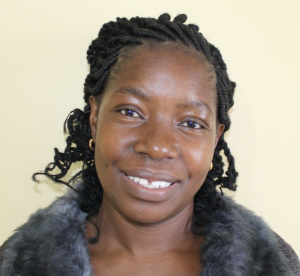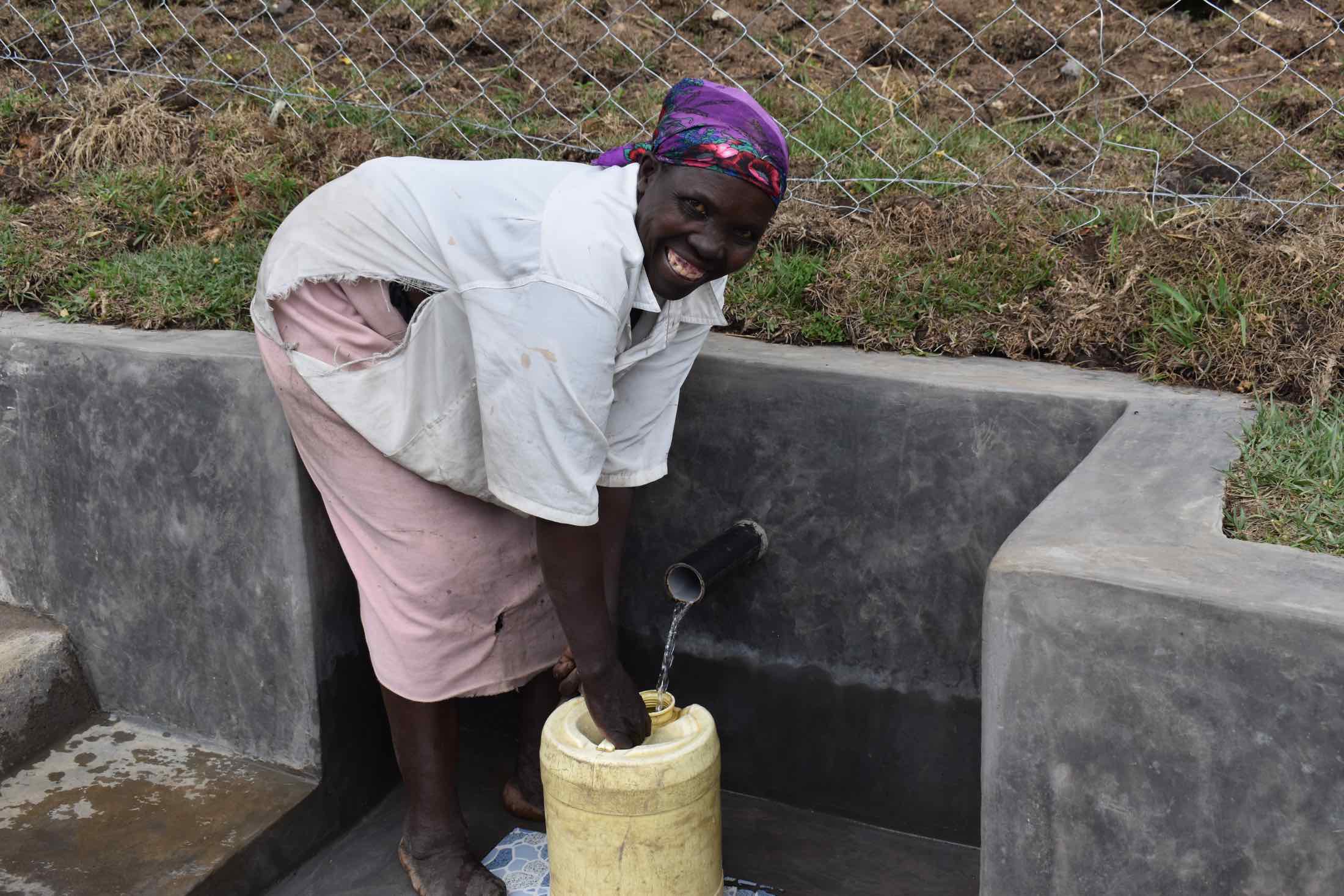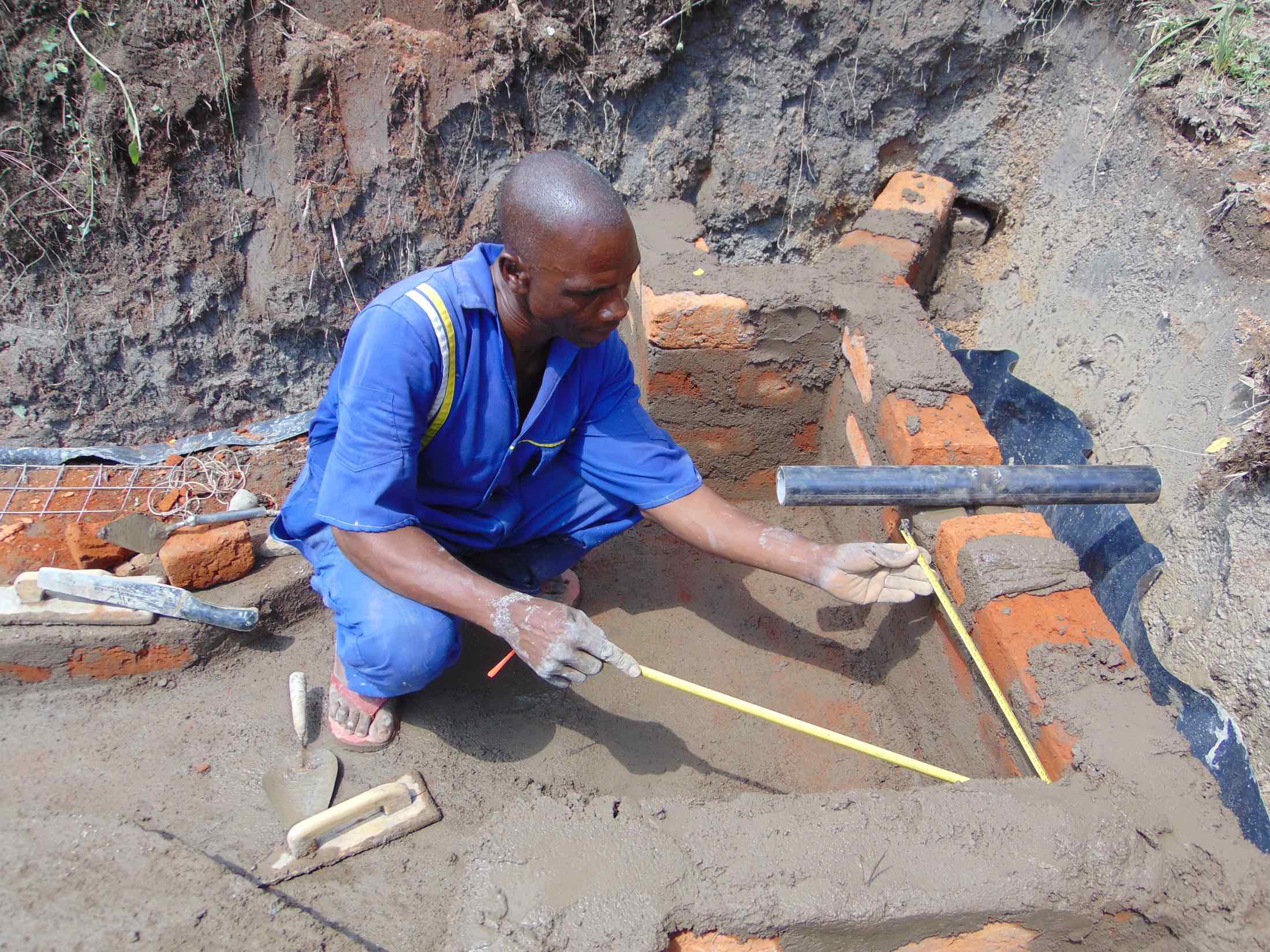"Typhoid and diarrhea are common diseases that affect us and our family members from time to time and there is no way we can eliminate it unless we have access to clean and safe water. Much money is spent on hospital bills as we seek treatment. This money could otherwise be used to buy family essentials like soap and food," said Robai Onyango, a 58-year-old farmer and the landowner of Onyango Spring.
"The current situation in this country requires that we wash our hands frequently with soap as a preventive mechanism to combat the spread of coronavirus," added primary school-aged boy, Reagan.
"We do wash our hands, but the water is not clean, posing to us a risk of getting infected with sickness including COVID-19."
Onyango Spring is located in Malimali Village, a peaceful place with frequent sounds from birds and people conversing as they greet each other and talk about current issues. The area has large rocks that people break into smaller pieces and gravel to sell locally for construction projects. Most farms here are full of sugarcane, beans, and maize, and most houses are semi-permanent with grass-thatched kitchens.
People in this community practice small-scale farming, selling excess farm products for some income. Some men work in the nearby sugar factory while others operate as boda boda (motorcycle taxi) riders, providing transport services to the locals.
133 people in Malimali depend on Onyango Spring as their closest and only year-round water point. But as Mama Onyango and Reagan reported, the spring is not serving them well.
Since women and girls are the ones predominantly responsible for fetching water for their families, they must wake up very early to do this task before anything else. Fetching water has to be a priority since water is essential to cleaning, cooking, bathing, washing dishes, and of course, drinking.
After lunch and before dinner, the women and girls return to Onyango Spring for more water as their day's activities progress. Some have to make more than 13 trips to the spring each day to meet their basic needs, especially if they find the water too dirty to fetch at any point during the day. The latter is especially common during the rainy season.
Onyango Spring has never dried up, even during the most recent and very severe drought in 2019. But since the spring is open, resembling a large puddle, the water is dirty and contaminated. Runoff from the rains carries farm chemicals, residues from animal waste, and soil directly into the pool of water. Algae, frogs, freshwater crabs, and a layer of rotting plant material at the bottom add to the water's contamination.
The way people have to fetch water also dirties it. Without a discharge pipe or a way to create running water, people have to either submerge their container in the spring or scoop the water from the pool using a small jug to then pour into a larger jerrycan. Both processes bring any dirt and bacteria that were on the container and people's hands into the water. Sometimes shoes and toes slip into the water by accident too due to the muddy edge of the spring.
People waste a lot of time at the spring trying to fetch the cleanest water possible. If people try to fetch the water too quickly, or more than one person at a time, they risk stirring up the mud and rotting leaves from the bottom into the water they collect. The scoop-pour method is extremely time-consuming, especially when people bring multiple jerrycans at once to fill up. Time spent fetching water detracts from the rest of the day's activities, and soon many women find they are spending more time at the spring than anywhere else. Jobs, farmwork, housework, and childcare suffer because of it.
Accessibility is another challenge at Onyango Spring. The area surrounding the spring is bushy and muddy. Community members have put a few stones at the water's edge to try to help them keep their balance above the water, but these, too, are slippery. The path that leads to the spring is very steep and if one is not careful, they can fall and get hurt. The elderly, women who are pregnant, and young children especially have trouble accessing the spring.
What We Can Do:
Spring Protection
Protecting the spring will help provide access to cleaner and safer water and reduce the time people have to spend to fetch it. Construction will keep surface runoff and other contaminants out of the water. With the community’s high involvement in the process, there should be a good sense of responsibility and ownership for the new clean water source.
Fetching water is a task predominantly carried out by women and young girls. Protecting the spring and offering training and support will, therefore, help empower the female members of the community by freeing up more of their time and energy to engage and invest in income-generating activities and their education.
Training on Health, Hygiene, COVID-19, and More
To hold trainings during the pandemic, we work closely with both community leaders and the local government to approve small groups to attend training. We ask community leaders to invite a select yet representative group of people to attend training who will then act as ambassadors to the rest of the community to share what they learn. We also communicate our expectations of physical distancing and wearing masks for all who choose to attend.
The training will focus on improved hygiene, health, and sanitation habits in this community. We will also have a dedicated session on COVID-19 symptoms, transmission routes, and prevention best practices.
With the community’s input, we will identify key leverage points where they can alter their practices at the personal, household, and community levels to affect change. This training will help to ensure participants have the knowledge they need about healthy practices and their importance to make the most of their water point as soon as water is flowing.
Our team of facilitators will use a variety of methods to train community members. Some of these methods include participatory hygiene and sanitation transformation, asset-based community development, group discussions, handouts, and demonstrations at the spring.
One of the most important issues we plan to cover is the handling, storage, and treatment of water. Having a clean water source will be extremely helpful, but it is useless if water gets contaminated by the time it is consumed. We and the community strongly believe that all of these components will work together to improve living standards here, which will help to unlock the potential for these community members to live better, healthier lives.
We will then conduct a small series of follow-up trainings before transitioning to our regularly scheduled support visits throughout the year.
Training will result in the formation of a water user committee, elected by their peers, that will oversee the operations and maintenance of the spring. The committee will enforce proper behavior around the spring and delegate tasks that will help preserve the site, such as building a fence and digging proper drainage channels. The fence will keep out destructive animals and unwanted waste, and the drainage will keep the area’s mosquito population at a minimum.

 Protected Spring
Protected Spring
 Rehabilitation Project
Rehabilitation Project






































